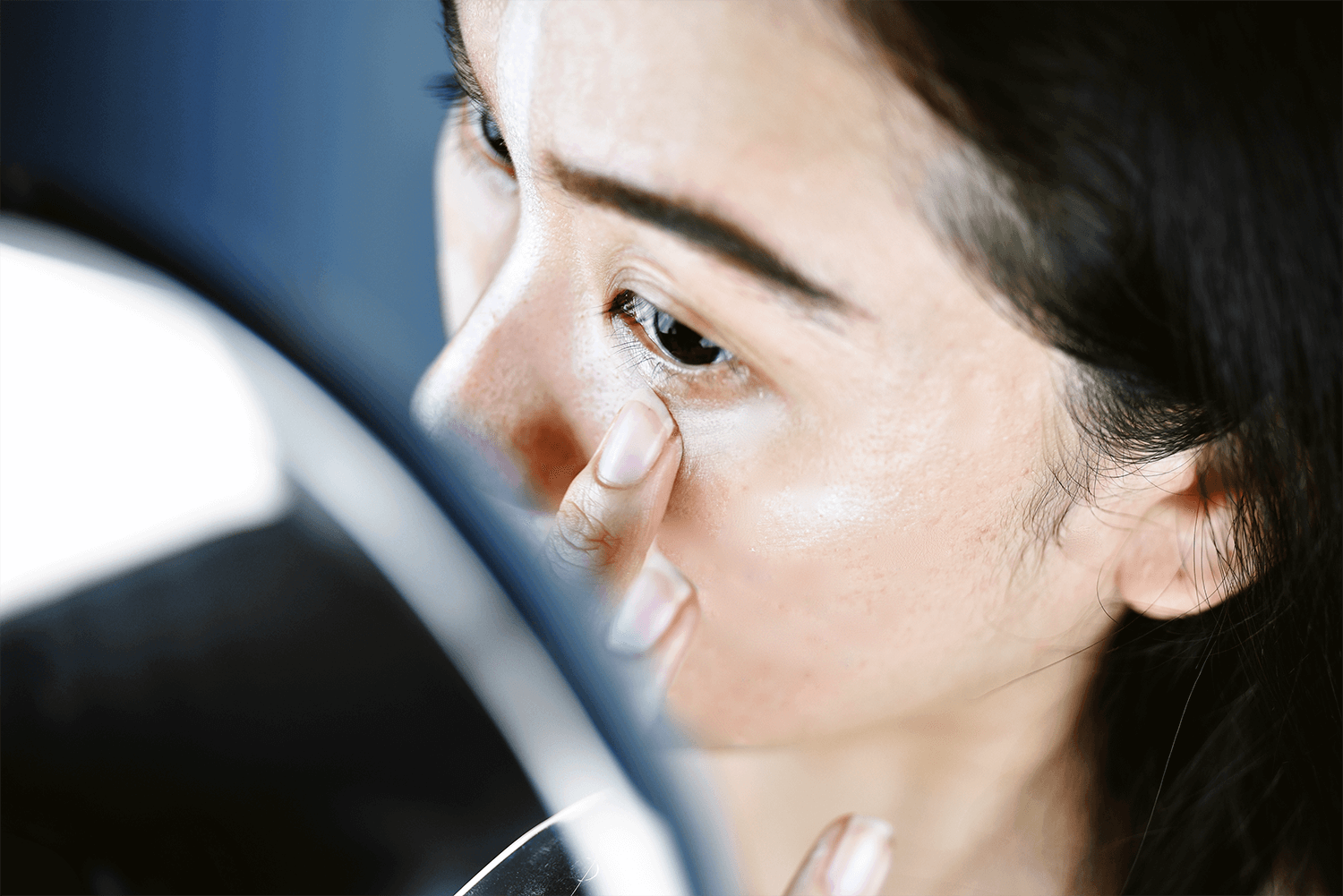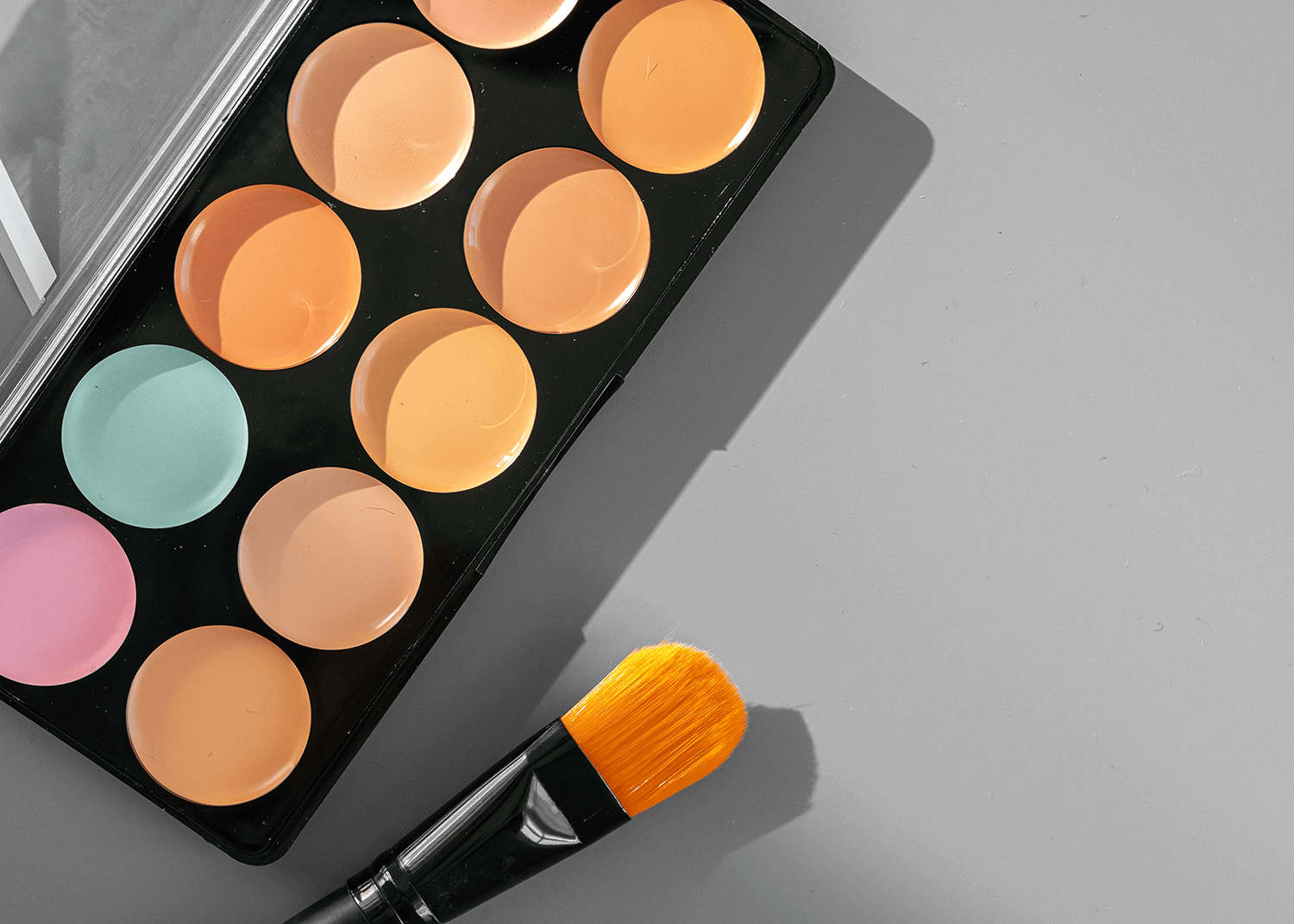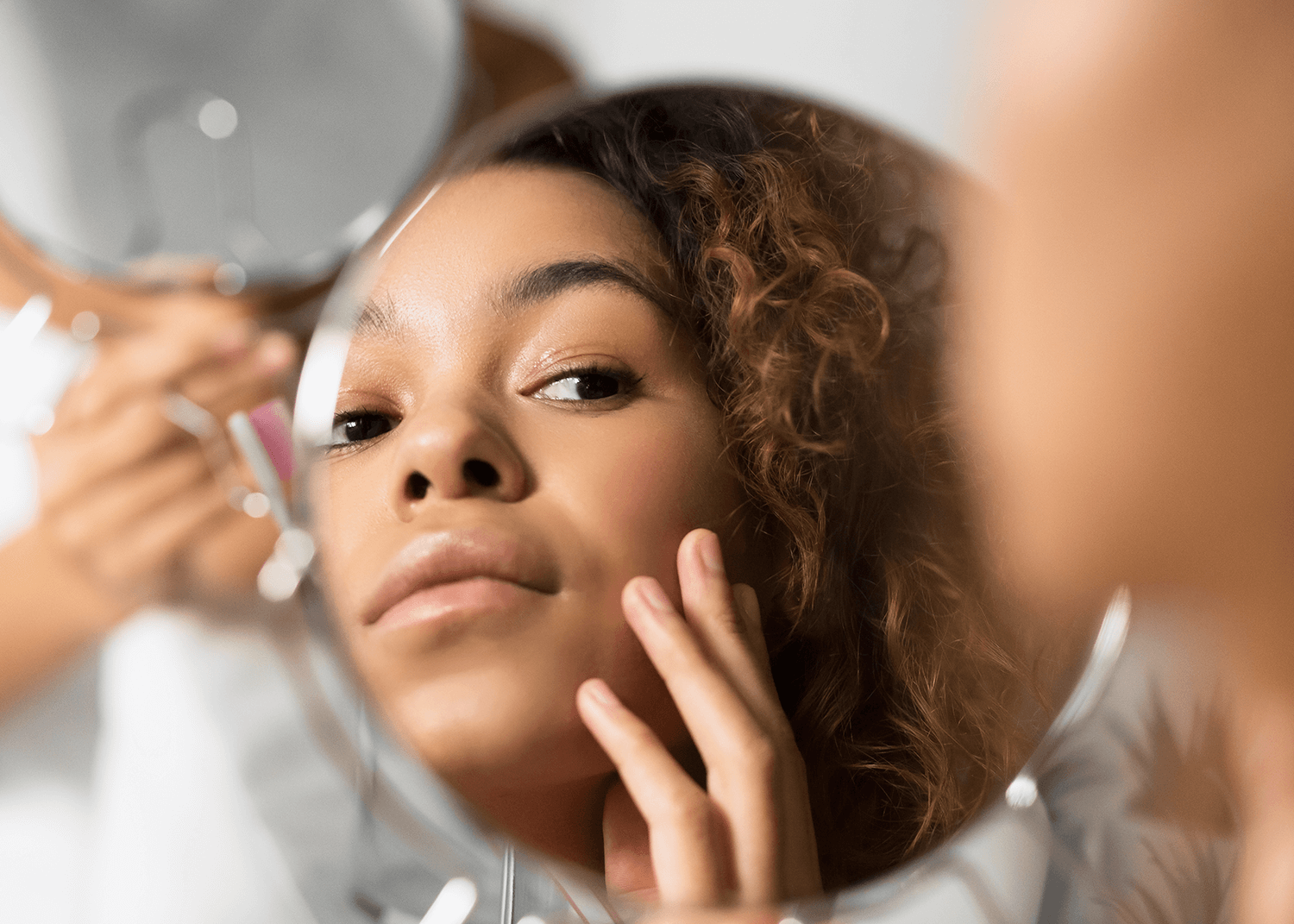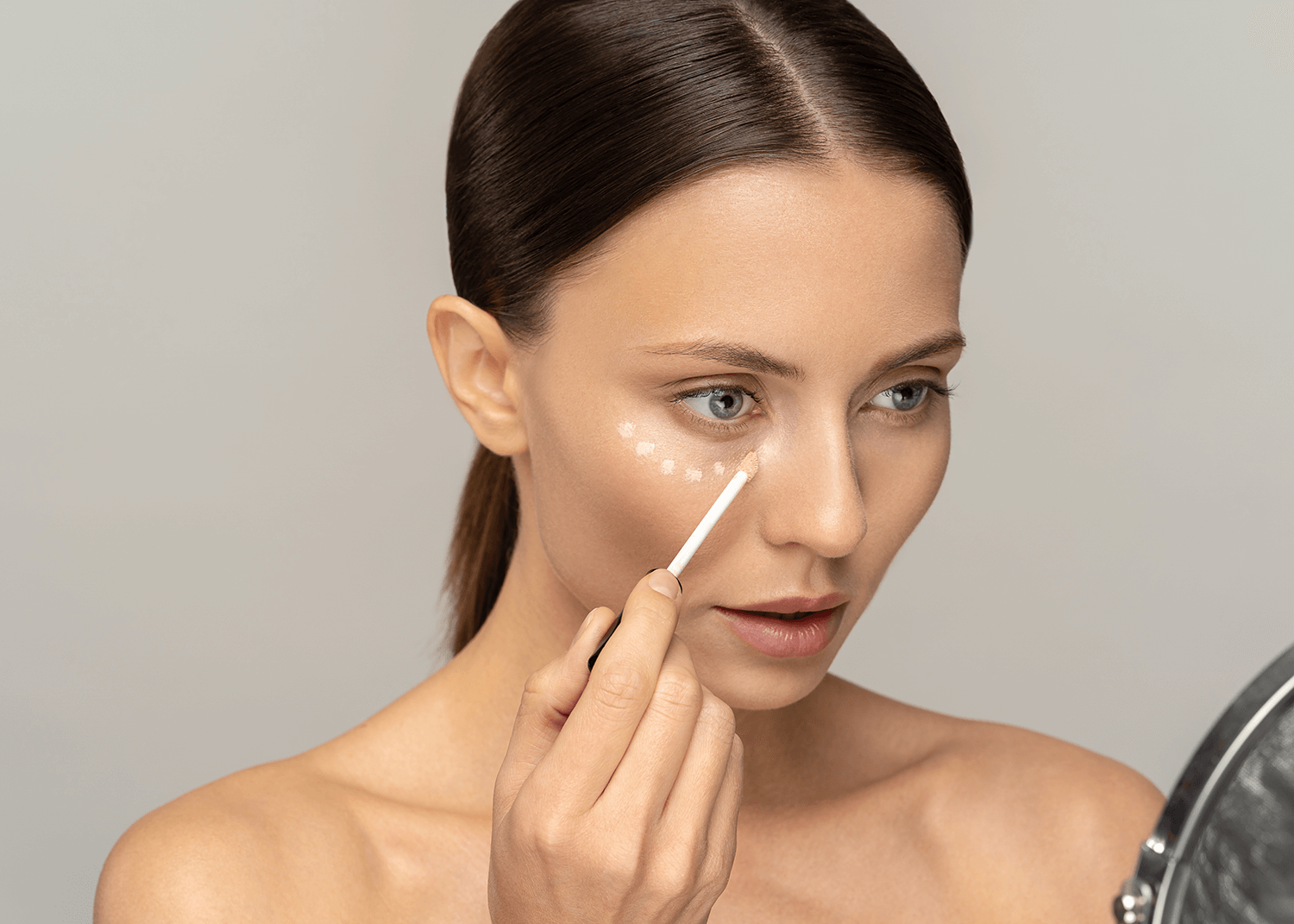As a vital step in your makeup routine, but a seemingly small one, getting your concealer right is a must. But rather than worry about the concealer type or what you’re applying it with, learning how to choose a concealer shade is the most important step.
So, why does concealer colour matter so much? Well, if you choose one shade too light, you’re suddenly showing off dark circles and bags instead of hiding them. And go too dark? Congrats, you’re now highlighting your latest pimple.
To get the full, intended effect of concealer, we want the colour to match our skin perfectly. This guide can walk you through how to match concealer, choose the best one for your makeup routine, and what each colour can do.

How to Determine Your Skin’s Undertone
Ever wondered why certain makeup products look amazing on your bestie but end up washing you out? Or why you can rock a particular bronzer, but it comes out all orange on whoever you lend it to? The answer is simple: undertone.
Before we dive into the world of concealers and their colour-correcting prowess, we need to learn our skin undertone, which means the colour that lies beneath the surface of our skin. Our undertone can be either cool, warm, or neutral, and once you know it, you can easily match foundation, concealer, blush, and all kinds of makeup products to it.
The easiest way to determine your undertone is to look at the veins on your wrist. If they appear blue or purple, you have a cool undertone. If they appear greenish, it’s a warm undertone. Can’t tell exactly? This probably indicates a neutral undertone that doesn’t go either way.
Figured out your skin’s undertone? If you’re still having troubles, when you look at your jaw line you will be able to see if your skin is pulling more pink, yellow, olive tones. Now let’s move on to the good stuff.

How to choose a colour correcting concealer
The goal of a concealer is to hide blemishes, spots, and otherwise unwanted things from our skin. This is achieved most effectively when you’ve colour-matched it perfectly to your skin. This allows the concealer to neutralise any discolouration of the skin and help it to blend in seamlessly with the rest of it.
Colour-correcting concealers come in various hues, each with a special and unique purpose. To get your head around what each can do, here are the best uses for the colours in your makeup routine.
- Green. Looking a bit red in the cheeks, nose, chin? A green concealer works perfectly on those pesky scarlet spots like acne scars, rosacea, or inflammation. Quickly cancel out the redness with a splash of green concealer and be amazed at the difference!
- Purple. Someone with yellow undertones might find a purple concealer helpful. This can boost the skin’s brightness, making your complexion appear less dull.
- Yellow. Those with purple and blue hues in their skin’s undertone will appreciate everything yellow can do. Looking for the ultimate defeater of dark circles under the eyes? Fairer-skinned people will do well using some yellow concealer on them.
- Pink. Making up a fair to medium skin face usually calls for a pink hue to the concealer. This is because they can add brightness to your complexion, giving you a glowing look. Rare Beauty’s Liquid Touch Brightening Concealer is the perfect fit for this, and it comes in almost 50 different shades, so you can find the right match.
- Orange. Darker skin tones should stick to an orange concealer colour for dark circles and bags under the eyes. This colour effectively neutralises the blue hues associated with both for a more flawless finish.
Tip for Choosing a Concealer Shade
As equally important as the hues of the shade is the actual shade itself. Depending on what you’re covering up, there are a few rules to follow to ensure it works like a treat.
- Under-eye concealers are perfect when they’re one shade lighter than your skin.
- A blemish concealer works best in an exact match for your skin.
- Don’t choose anything too light — regardless of what you’re concealing — as it’ll be immediately apparent and turn your skin ashy.
- If you can afford it, have two concealers. One that’s an exact match and another that’s one shade lighter.

Concealer Shade and Skin Types
Skin type is vital when choosing makeup and skincare; the same goes for concealer. A perfectly matched concealer will go on smoothly and stay on longer, so it’s worth spending time matching this product to your skin type. Here are the best picks for each:
Dry Skin
Check the label for the products benefit features for anything hydrating if you have dry skin. Even though you only have to apply a small amount to specific areas of your face, that little boost of hydration can do wonders. Plus, it ensures you don’t get a creased, wrinkly look where you’ve applied the concealer.
Oily skin
Always choose an oil-free concealer — and most other makeup products — so you don’t exacerbate your already oily skin. Matte concealers are a good pick if you’re worried about it getting too slick. Huda Beauty’s #Fauxfilter Luminous Matte Concealer is our favourite find. It combines a simple, matte finish without dulling your complexion. Perfect!
Combination skin
If you have a little bit of both, err on the side of caution and choose an oil-free concealer. But if you’re applying concealer to the typically drier parts of your face, you might choose a more hydrating formula for these spots.
Test things out
Although it’s a little harder to test makeup shades when you shop online, it’s worth giving it a shot when choosing concealer. Once you’ve found a concealer that suits your skin type, you want to take it a step further and try it out on your skin. Remember: makeup can be deceiving when shown anywhere else but on you.
Place a small swatch on your jawline and blend it out. Concealer that blends in seamlessly is a perfect match. Otherwise, it will appear darker or lighter than your skin. If you’re still struggling, step out into the sunlight and look there. Getting a more accurate reading of the colours in a natural light setting is always easier.

How to Apply Concealer Like a Pro
Armed with your new best friend (aka a perfectly matched concealer), you can now learn how to apply it. These simple steps will allow you to get the most out of your concealer and keep it in place for longer.
- Prep the skin with your usual primer and moisturiser. Not only does it hydrate your face, but it’ll create a smooth base for the concealer to glide onto without creasing. Then, continue with the rest of your makeup routine, as concealer usually goes on top of the foundation.
- Only dab a small amount of concealer onto the back of the hand to warm it up, then with your finger on the desired area. Then, you can always build on it if you need more.
- Use a concealer brush or makeup sponge to blend it out. Sponges are best for blending, but brushes are ideal for precise application. The goal is to create a seamless finish so you can’t see where the concealer begins, and your skin ends.
- Lightly dust the concealed area with a translucent powder. This helps it stay put and fills in the smaller lines that can look creased.
Mastering the Art of Concealer
With the right concealer in your arsenal and some application tips, you can create a flawless finish that hides all your problem areas. Concealer works perfectly on its own for a more natural look or as part of a full beat, so have fun playing around with what’s possible.
FAQs
Concealer is usually one shade lighter than the foundation for highlighting and under-eye brightening. Concealing blemishes can be done with the same colour as your natural skin tone.
A green concealer is best for covering dark circles under the eyes, preferably a cream based product. Orange-hued concealers also cover dark circles for darker to medium skin tones.
Concealer undertones are cool, warm, neutral, or olive and should match the wearer’s natural skin undertone for the best results.
To determine your skin undertone, inspect the veins on your wrist. Blue or purple veins indicate a cool undertone, while greenish veins indicate a warm undertone. If you can’t tell, you may have a neutral undertone.
Shopping for concealer online is as simple as referring to swatches, customer reviews, and descriptions. But, before choosing one, learn your skin undertone for the best match.

